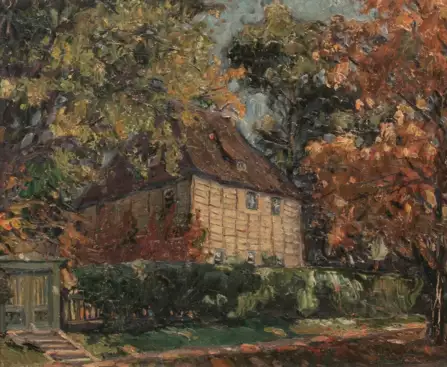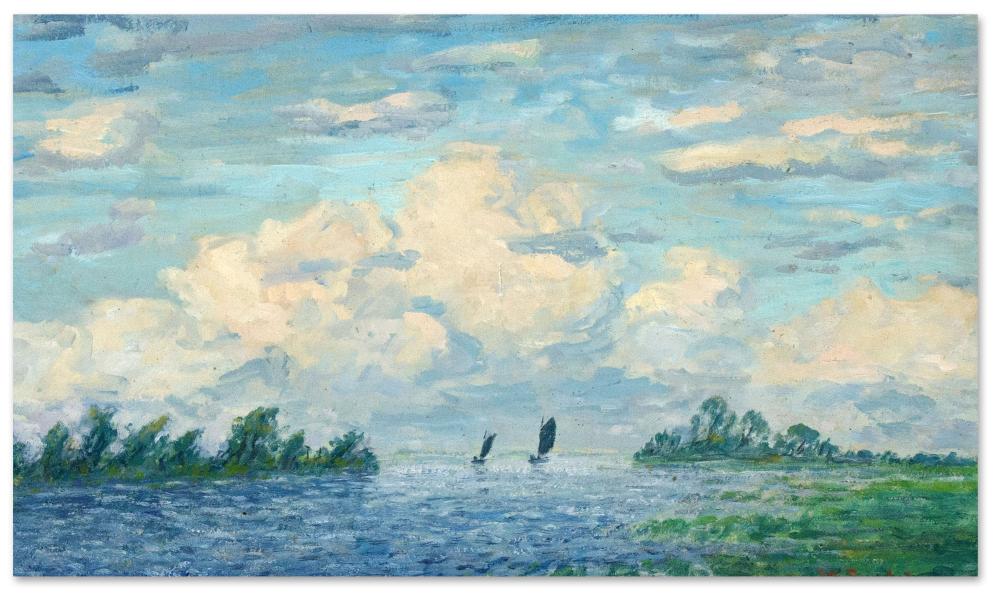art nord-allemand et nouveaux maîtres

Friedrich Ahlers-Hestermann was a German painter and art writer from Hamburg. He was a member of the Hamburgische Künstlerclub of 1897, as well as of the Hamburg artist's workshop of 1832 and pupil of the Académie Matisse in Paris. After the First World War, he was a co-founder of the Hamburg Secession.
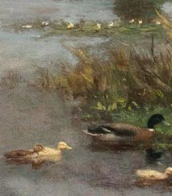

Lisel Oppel, actually Anna Amalie Elisabeth Oppel, was a German painter and ceramist who remains to this day one of the most memorable members of the Worpswede artist colony. From 1917 she studied painting at the Academy of Fine Arts in Munich with Richard Riemerschmid and Hermann Gröber.
Liesel Oppel painted simple paintings with great joy and colourfulness; mainly portraits, people at work and on holidays, less often pure landscapes. One of Oppel's special pictorial themes was children's pastimes in the countryside, in which she adopted and extended the motifs of the early Worpswede artists. Most of her work was created in the 1950s. She continued her expressive painting style.


Lisel Oppel, actually Anna Amalie Elisabeth Oppel, was a German painter and ceramist who remains to this day one of the most memorable members of the Worpswede artist colony. From 1917 she studied painting at the Academy of Fine Arts in Munich with Richard Riemerschmid and Hermann Gröber.
Liesel Oppel painted simple paintings with great joy and colourfulness; mainly portraits, people at work and on holidays, less often pure landscapes. One of Oppel's special pictorial themes was children's pastimes in the countryside, in which she adopted and extended the motifs of the early Worpswede artists. Most of her work was created in the 1950s. She continued her expressive painting style.

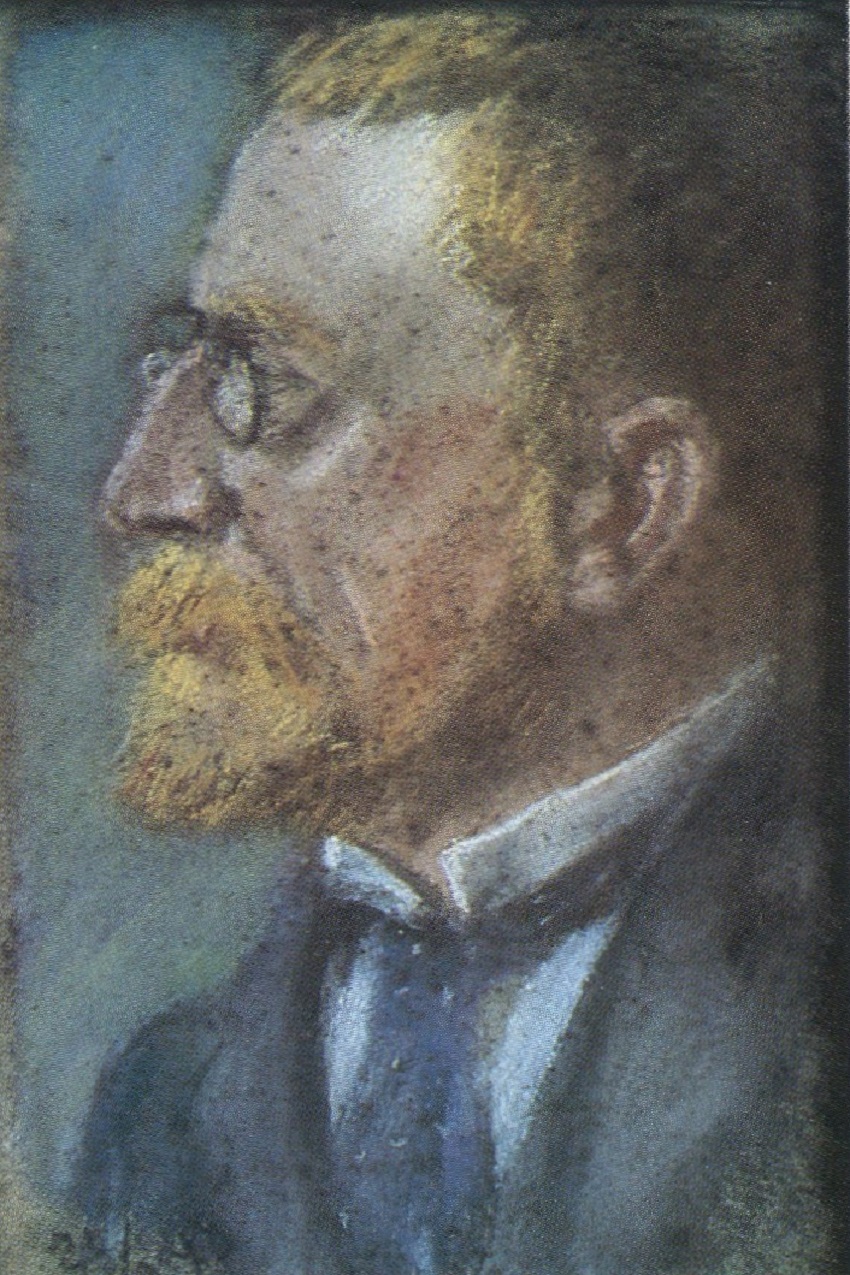
Thomas Ludwig Herbst was a German Impressionist painter; known mostly for landscapes and animal portraits.


Thomas Ludwig Herbst was a German Impressionist painter; known mostly for landscapes and animal portraits.


Thomas Ludwig Herbst was a German Impressionist painter; known mostly for landscapes and animal portraits.


Thomas Ludwig Herbst was a German Impressionist painter; known mostly for landscapes and animal portraits.


Karl Wilhelm Arthur Illies was a German impressionist painter. He specialised in landscapes and was considered a brilliant graphic artist.

-eitner-portrait-of-alma-del-banco.jpg)
Alma del Banco was a German artist of the first half of the twentieth century of Jewish origin. She is known as a painter and graphic artist and is considered a representative of Art Nouveau.
Alma del Banco, who began her career as an artist rather late, was already a recognized figure of the Hamburg art scene in the early 1920s and one of the founders of the Hamburg Secession art group. At the beginning of her career she was strongly influenced by Cubism, then her artistic style changed, it became less schematic and her work became more meticulous. The artist achieved considerable success in the portrait genre. However, after the Nazis came to power in Germany, she was banned from exhibiting and her work was declared "degenerate art".


Paul Kayser was a German painter and graphic artist. After training as a painter-decorator, Kayser attended the Schools of Applied Art in Munich and Dresden.
Paul Kayser was a founding member of the Hamburg Artists' Club 1897 and the Hamburg Secession, and a member of the Hamburg Artists' Association and the Altona Artists' Association. His style was decisively influenced by Albert Marquet, whom Kaiser met in 1909.
In 1937, Kaiser's still life was confiscated from the museum in Husum as part of the Nazi "Degenerate Art" campaign.


Dorothea Maetzel-Johannsen was a German modernist painter. She was a co-founder of the Hamburg Secession. Since 1919 she based her major expressionist works on the work of the dissolved Brücke (group of artists), early cubism and African sculpture.
Dorothea Maetzel-Johannsen has developed an individual mode of expression in Expressionism. Although her works feature the typical angular contours, two-dimensional concept of space and dynamic oblique compositions, unlike her peers, the artist refrained from any form of aggressiveness in her compositions. In her still life and figurative paintings, a contemplative mood resonates, contrary to the dynamic composition of the painting.
In 1937, Dorothea Maetzel-Johannsen's works were confiscated from the Kunsthalle Hamburg as part of the Nazi action "Degenerate Art" and then destroyed.


Anton Nissen is a German and Danish artist.
Anton Nissen is known primarily as a landscape painter, reflecting the nature of northern Schleswig. He was also an author of genre paintings. Anton Nissen's works can be seen in museums in Germany and Denmark. Anton Nissen is the father of painter and yachtsman Arndt Georg Nissen.


Hugo Vogel was a German painter of the second half of the 19th and early 20th centuries. He is known as a painter, author of historical paintings and portraits.
Vogel created historical and genre paintings in the style of the latest colorists. He was also the author of monumental frescoes on historical themes for the magistrates' halls in Berlin, Hamburg and Merseburg. Portraits, including of prominent German scientists, writers and political figures, occupy a special place in his oeuvre. There are streets in Magdeburg, Berlin and Merseburg named after this artist.


Thomas Ludwig Herbst was a German Impressionist painter; known mostly for landscapes and animal portraits.


Thomas Ludwig Herbst was a German Impressionist painter; known mostly for landscapes and animal portraits.

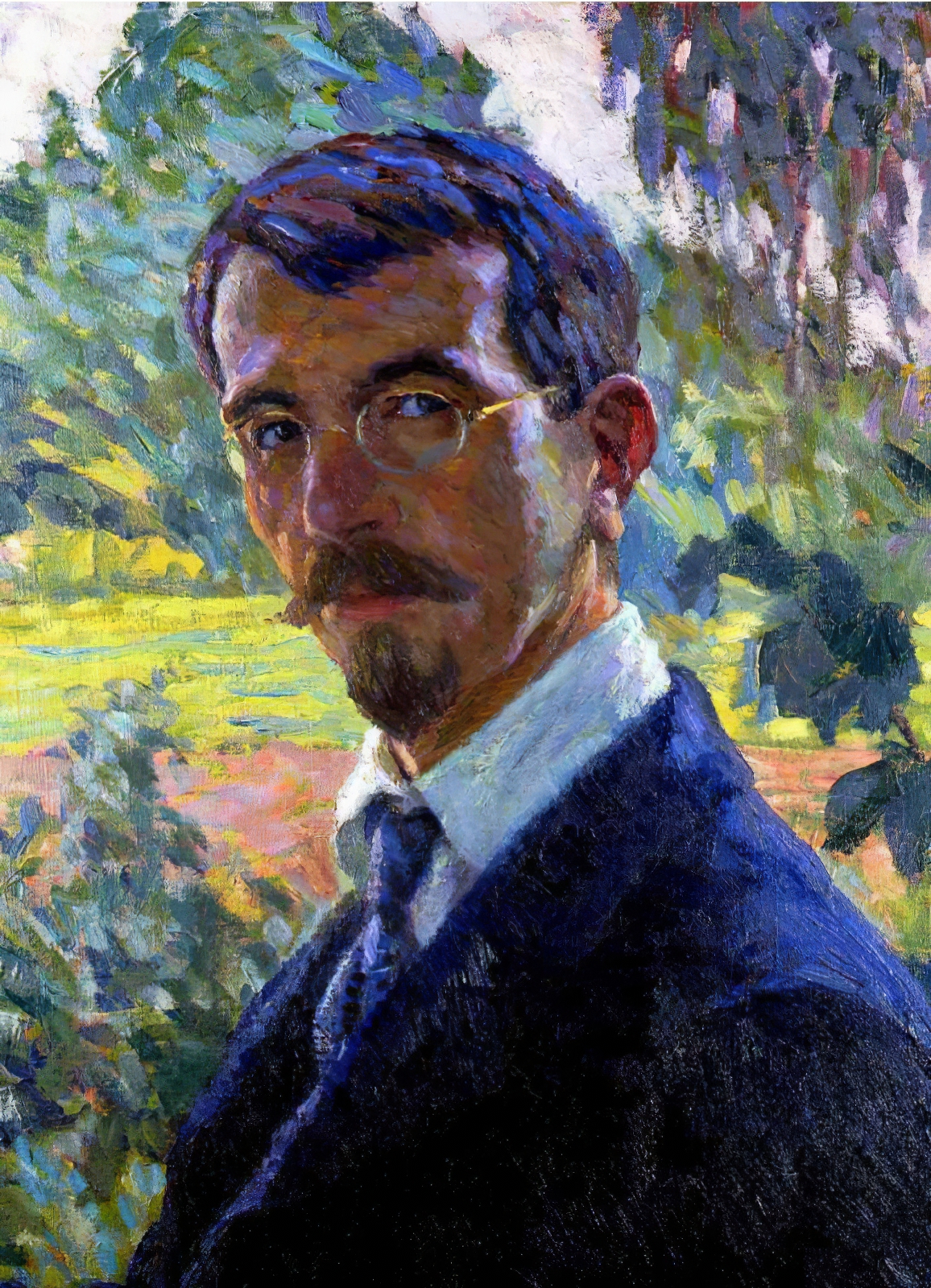
Wilhelm Heinrich Ernst Eitner was a German painter of the late nineteenth and first half of the twentieth centuries. He is known as an impressionist painter and teacher.
Eitner produced portraits, landscapes, and woodcuts in a style reminiscent of Japanese art. Despite initial rejection in German society of his impressionist style of painting, over the years he gained recognition and even the title "Claude Monet of the North." Eitner was a member of numerous art associations. His works are preserved in the Hamburg Kunsthalle.


Johann Georg Valentin Ruths was a German painter of the second half of the nineteenth and early twentieth centuries. He is known as a landscape painter.
Ruths painted a variety of natural landscapes, including forests, mountains, plains, desert places and villages. He most often depicted the lower Elbe River, as well as Italian and Swiss vistas. His paintings, imbued with an elegiac mood, are still popular in Germany and are common in galleries and private collections. Some of his famous works are "Evening in the Sabine Mountains", "North German Oak Tree", "The Grave of a Rich Man on the Baltic Coast", "The First Spring Day", "Misty Morning in the Forest" and others.


Paul Müller-Kaempff was a German painter, illustrator and lithographer. He is associated with the Düsseldorf school of painting.


Paul Müller-Kaempff was a German painter, illustrator and lithographer. He is associated with the Düsseldorf school of painting.


Henning Edens was a German landscape painter, greatly influenced by Claude Monet and Camille Pissarro.


Heinrich Blunck, also Blunck-Heikendorf was a North German painter and lithographer.


Friedrich Ahlers-Hestermann was a German painter and art writer from Hamburg. He was a member of the Hamburgische Künstlerclub of 1897, as well as of the Hamburg artist's workshop of 1832 and pupil of the Académie Matisse in Paris. After the First World War, he was a co-founder of the Hamburg Secession.



